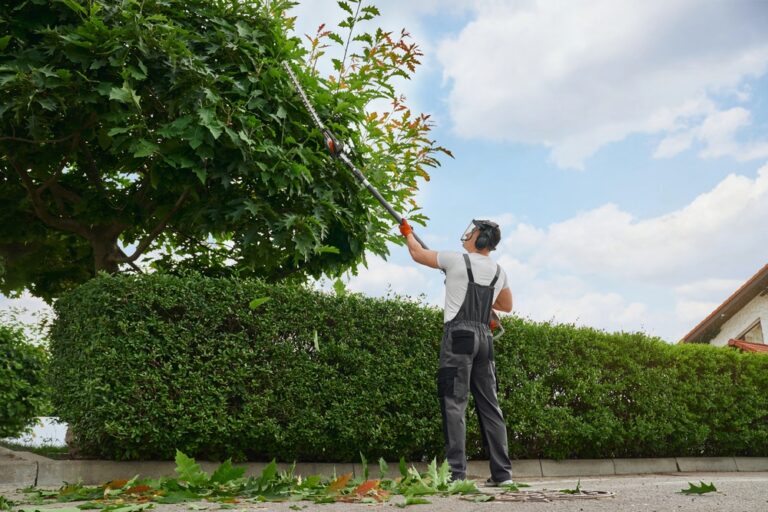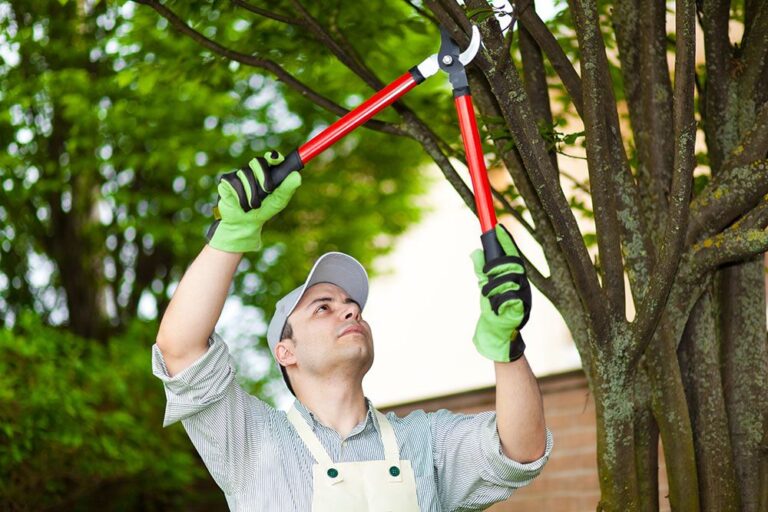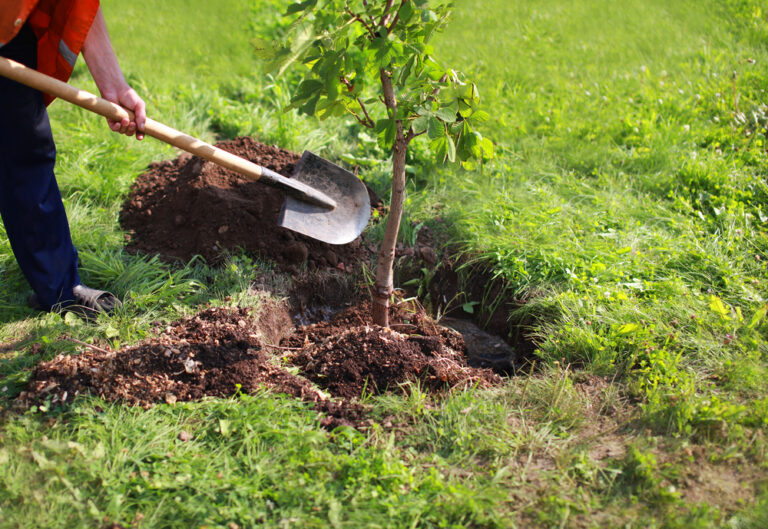Stay Safe while Trimming Trees: Essential Safety Precautions for DIY Tree Trimming
Tree trimming is a common task for homeowners looking to maintain the aesthetics and health of their landscape. However, it’s crucial to approach this task with caution, as it involves working at heights and handling sharp tools. In this article, we’ll delve into essential safety precautions for DIY tree trimming, ensuring a successful and injury-free experience.
Wear Appropriate Protective Gear
- Gloves: When handling tree branches, gloves are your first line of defense against cuts, scrapes, and blisters. Opt for gloves with reinforced palms and fingers for added protection. Additionally, ensure a snug fit to maintain dexterity while operating tools.
- Eye Protection: Flying debris, sawdust, and small wood chips pose a significant risk to your eyes during tree trimming. Investing in high-quality safety goggles or glasses with side shields can prevent eye injuries and maintain clear vision throughout the task.
- Ear Protection: The loud noise generated by chainsaws and other power tools can cause hearing damage over time. Protect your ears with foam earplugs or earmuffs that provide adequate noise reduction without compromising comfort.
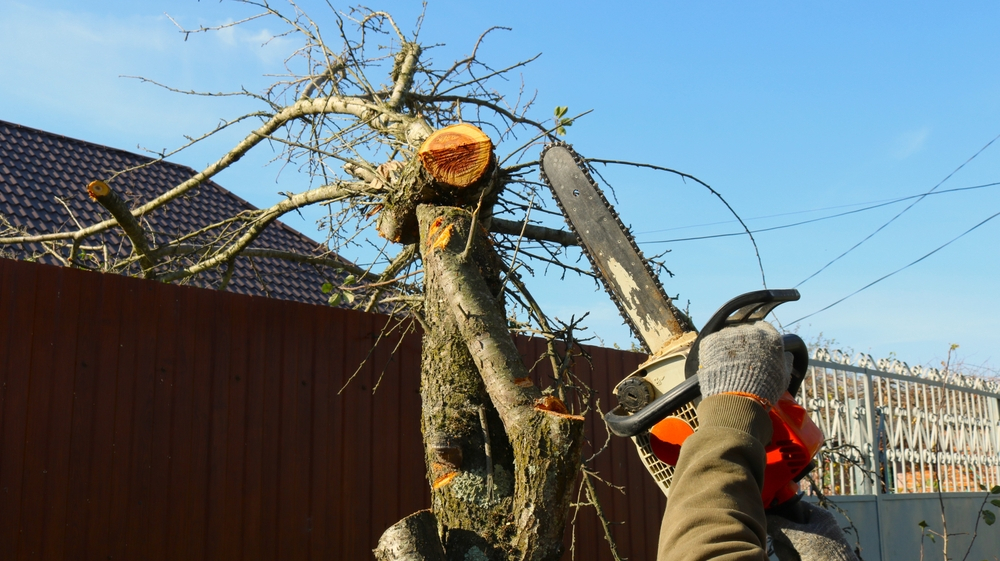
Familiarize Yourself with Your Tools
- Pruners: Pruners come in various types, including bypass and anvil pruners, each designed for specific tasks. Bypass pruners are ideal for cutting live branches, as they deliver clean cuts without crushing the plant tissue. On the other hand, anvil pruners are suitable for deadwood removal, as they exert more force to cut through tough branches.
- Saws: Hand saws, pole saws, and chainsaws are indispensable tools for cutting larger branches during tree trimming. Before use, familiarize yourself with the operation and safety features of each saw type. Additionally, ensure that saw blades are sharp and properly tensioned to minimize kickback and binding.
- Ladders: Working at heights introduces additional risks, especially when using ladders to access tree branches. Choose a sturdy, non-conductive ladder that can support your weight and provide stability on uneven terrain. Always maintain three points of contact with the ladder and avoid overreaching to prevent falls.
Inspect the Tree and Surrounding Area
- Power Lines: Overhead power lines pose a severe hazard during tree trimming, as contact can result in electrocution or power outages. Before starting work, survey the area for nearby power lines and maintain a safe distance of at least 10 feet. If branches are within close proximity to power lines, contact the utility company for assistance.
- Nearby Structures: Falling branches can cause significant damage to buildings, vehicles, and other structures in the vicinity. Inspect the tree’s surroundings for obstacles such as fences, sheds, and overhead cables. Plan your cutting strategy to minimize the risk of property damage and ensure a safe working environment.
- Hazards: Tripping hazards such as rocks, roots, and debris can increase the risk of falls and injuries during tree trimming. Clear the work area of obstacles and create a designated zone for stacking branches and debris. Additionally, mark any uneven terrain or hidden hazards to alert yourself and others to potential dangers.
Plan Your Approach
- Branch Selection: Assess the tree’s overall health and identify any dead, diseased, or overhanging branches that require removal. Start by trimming smaller branches before tackling larger ones to maintain balance and stability in the tree. Prioritize branches that pose a safety risk or obstruct pathways and structures.
- Cutting Sequence: Develop a cutting plan that considers the weight distribution and natural growth pattern of the tree. Begin with strategic cuts to reduce the canopy’s bulk and improve air circulation. Avoid removing more than 25% of the tree’s foliage at once, as excessive pruning can stress the tree and compromise its health.
- Escape Route: Always have an exit strategy in place in case of emergency, such as a falling branch or unstable footing. Identify multiple escape routes that lead away from the tree and ensure they are clear of obstacles. Communicate your plan with any helpers or bystanders to coordinate movements and responses effectively.
Use Proper Cutting Techniques
- Angle Cuts: When removing branches, make angled cuts just outside the branch collar to promote rapid healing and reduce the risk of disease. Avoid leaving stubs or tearing the bark, as this can create entry points for pests and pathogens. Use sharp pruning tools to achieve clean, precise cuts with minimal effort.
- Support Cuts: For larger branches, use support cuts to prevent bark tearing and ensure a smooth, even finish. Support the branch with one hand while making the cut with the other to control its descent. Work systematically from the outside inwards, removing smaller branches first to lighten the load.
- Professional Help: If you encounter branches that are too large or difficult to reach safely, consider hiring a certified arborist for assistance. Arborists are trained professionals with the expertise and equipment to handle challenging tree trimming tasks. Avoid taking unnecessary risks and prioritize your safety above all else.
Maintain a Safe Distance
- Danger Zone: Maintain a safe distance of at least two tree lengths from the tree being trimmed to minimize the risk of injury from falling branches or tools. Exercise caution when operating chainsaws or pole saws, as they can kick back unexpectedly. Keep bystanders and pets out of the danger zone to prevent accidents.
- Falling Branches: Position yourself away from the falling path of branches and debris to avoid injury during tree trimming. Be mindful of your surroundings and anticipate the trajectory of each cut to determine a safe standing position. Communicate with other workers or bystanders to ensure they are aware of potential hazards.
- Clear Communication: Establish clear communication channels with any helpers or bystanders to coordinate movements and actions during tree trimming. Use verbal cues and hand signals to indicate when it’s safe to approach the tree or when a branch is about to fall. Maintain constant awareness of your surroundings and be prepared to react swiftly to changing conditions.
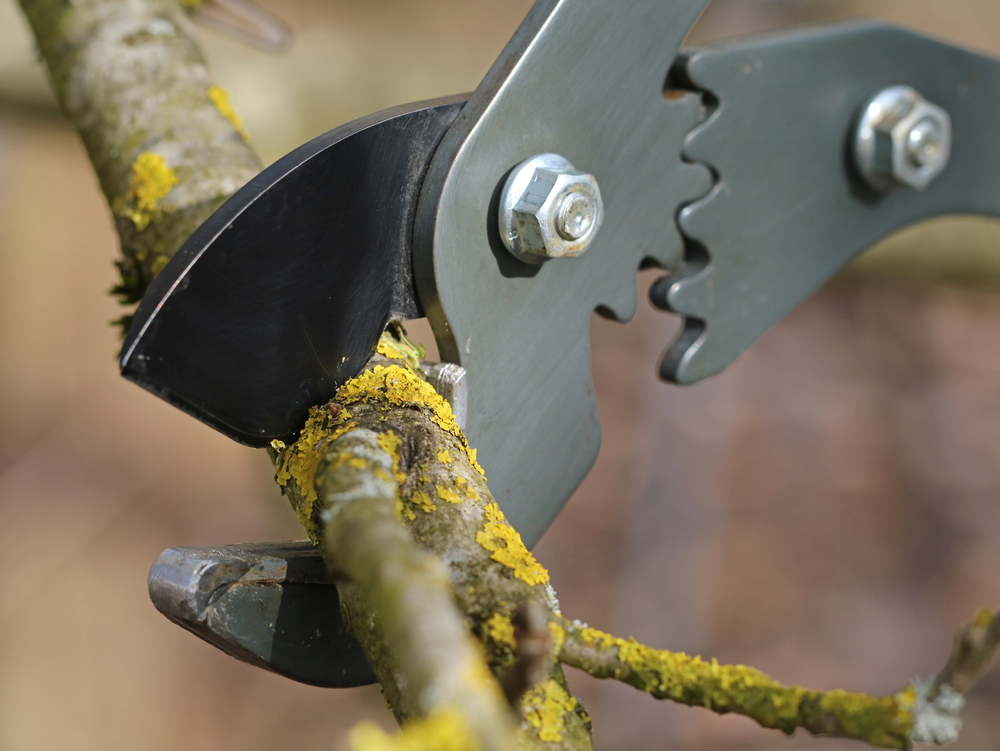
Clean Up Properly
- Debris Removal: After completing the tree trimming project, gather trimmed branches and debris promptly to prevent tripping hazards and maintain a tidy work area. Use tarps or wheelbarrows to transport branches to the disposal site safely. Dispose of green waste responsibly by recycling or composting where possible.
- Disposal Methods: Avoid burning tree trimmings near power lines or in windy conditions, as this can pose a fire hazard. Instead, consider chipping larger branches into mulch or arranging for curbside pickup of yard waste. Consult local regulations regarding green waste disposal and follow recommended guidelines to minimize environmental impact.
- Tool Maintenance: Clean and store pruning tools and equipment properly after use to prolong their lifespan and ensure safe operation. Remove any sap or debris from blades and lubricate moving parts to prevent rust and corrosion. Inspect tools regularly for signs of wear or damage and repair or replace them as needed to maintain optimal performance.
Conclusion
In conclusion, DIY tree trimming can be a rewarding and fulfilling task when approached with caution and proper safety precautions. By wearing appropriate protective gear, familiarizing yourself with your tools, inspecting the tree and surrounding area, planning your approach, using proper cutting techniques, maintaining a safe distance, and cleaning up properly, you can minimize the risks associated with tree trimming company and ensure a successful outcome. Remember to prioritize safety at all times and seek professional help if you encounter challenging or hazardous situations. Stay safe and enjoy the beauty of a well-maintained landscape!

